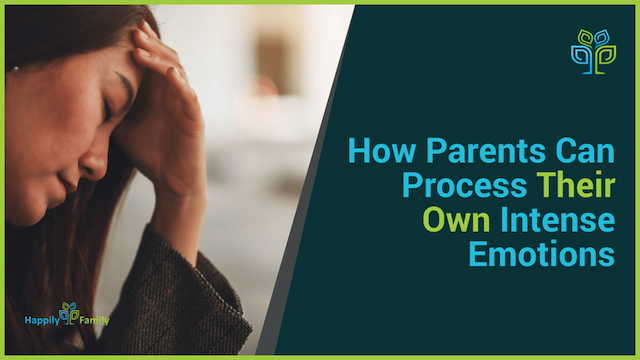Parenting can often feel overwhelming, especially when our children experience intense emotions. To effectively support them, we must first process our own feelings. This guide offers practical journal prompts that you can use after a meltdown or before the next one, to help you navigate challenging moments with empathy and understanding.
Understanding Meltdowns
When a child has a meltdown, it can feel like an emotional storm, sweeping through our homes and leaving chaos in its wake. It's essential to understand that these outbursts aren't merely tantrums or bad behavior; they're often a child's way of expressing overwhelming emotions. Just as adults can feel overwhelmed when faced with intense stressors, children can experience similar feelings, often without the vocabulary or skills to articulate what they're going through.
When your child is in the throes of a meltdown, they may be experiencing a mix of fear, frustration, and confusion. Their brains are still developing, and they might not have the tools to self-regulate. This is a crucial moment for both you and your child—a time to connect and offer support. By recognizing that meltdowns are a natural part of emotional development, we can approach them with empathy rather than frustration.
The Importance of Preparation
Preparation is key when it comes to managing meltdowns. Think of it as laying the groundwork for a peaceful resolution. Just like we wouldn't embark on a road trip without checking the map and packing essentials, we shouldn't navigate intense emotions without a plan. By preparing ourselves mentally and emotionally, we can create a supportive environment for our children when they need us the most.
This preparation involves self-reflection and emotional awareness. What triggers your child's meltdowns? Is it a particular situation, time of day, or emotional state? Understanding these triggers allows you to anticipate potential challenges and equip yourself with strategies to handle them. For instance, if you know that your child tends to struggle after a long day at school, you can create a calming routine for the afternoon that includes a snack, quiet time, or engaging activities.
Recognizing Vulnerability
When our children are melting down, they are at their most vulnerable, and so are we. It's easy to feel overwhelmed and defensive during these times, but recognizing that your child isn’t giving you a hard time, they are having a hard time, can be helpful. Instead of viewing the meltdown as a personal failure or a reflection of our parenting skills, we can see it as an opportunity to foster trust and support with our child.
If we can create a safe space for our children to express their feelings without fear or judgment it strengthens your relationship. You might say, “I know this is really tough for you, and it's okay to feel upset.” This simple acknowledgment can help your child feel understood and less alone in their experience.
The Power of Relationship Building
Connecting with your child is one of the most effective ways to help them navigate emotional storms. During (or after) a meltdown, your child needs to know that you are there for them, ready to support and listen. This is where the real power of connection comes into play. When your child feels secure in your relationship, they are more likely to seek your comfort during difficult times.
One way to strengthen this bond is through open communication. Encourage your child to express their feelings, even when they’re not in crisis. Regularly check in with them about their day, their emotions, and their thoughts. This creates a habit of sharing and helps them feel comfortable coming to you when they need support. Remember, it's not just about the big moments; it's the little conversations that weave the fabric of your relationship.
Getting Ready: Your Journal Prompts
Journaling can be a powerful tool for self-discovery and emotional processing. Here are some prompts to help you reflect on your child’s past meltdown and prepare for their next one:
- Recall your child’s last meltdown: What body sensations did you notice? Did you feel tightness in your chest or a knot in your stomach? Write it down.
- Identify the feelings you had at that time: Were you frustrated, anxious, or maybe even embarrassed? Acknowledge these emotions on paper.
- Examine your thoughts: What narratives or stories were running through your mind? Were they judgmental or compassionate? Document these thoughts to understand your emotional landscape better.
By reflecting on these prompts, you can gain insights into your emotional responses, which will help you remain grounded when your child is experiencing a meltdown.
Identifying Body Sensations
Understanding your body sensations during your child's emotional outbursts is crucial. Our bodies often react to stress or anxiety even before we consciously recognize it. You might notice your heart racing, your palms sweating, or a feeling of heaviness in your chest. These sensations can be clues that you need to take a moment to breathe and ground yourself.
When your child is upset, you might even be able to pause and check in with yourself. If you can, try to take a moment to tune in to your body.
Sometimes, simply taking a deep breath can help you regain your composure and stay present for your child. Remember, your calmness can have a ripple effect, helping to soothe your child in the midst of their storm.
Recognizing these physical sensations can also help you communicate with your child about emotions. You might say, “I notice that I feel tight in my chest when I'm anxious, and it's okay to feel that way.” This not only normalizes their feelings but also teaches them to recognize their own bodily cues.
Exploring Your Emotions
As parents, it’s essential to explore our emotions, especially when our children are going through intense moments. When your child is experiencing a meltdown, it can trigger a wave of feelings within you—anxiety, helplessness, frustration, or even guilt. Understanding these emotions is the first step towards managing them effectively.
Take a moment to reflect on your own emotional landscape. What feelings arise when your child is upset? Are there specific triggers that evoke stronger reactions in you? By tuning into your emotions, you can create a better environment for both you and your child. Journaling can be an effective tool here; consider writing about your feelings immediately after an incident. This practice not only clarifies your emotions but also helps you develop a deeper understanding of your responses.
Reflecting on Your Thoughts
Our thoughts can often spiral during challenging times. When your child is having a meltdown, you might find yourself thinking, “Why can’t they just calm down and behave?” or “What am I doing wrong as a parent?” These thoughts can amplify your stress and hinder your ability to respond calmly.
Take a step back and reflect on these thoughts. Are they based on facts or assumptions? Challenge any negative narratives you might be telling yourself. For instance, instead of thinking, “I’m failing as a parent,” try reframing it to, “I’m learning how to support my child better.” This shift in perspective can empower you to approach the situation with more compassion and clarity.
Creating a list of positive affirmations can also help you combat negative thoughts. Phrases like “I am doing my best” or “It’s okay to feel overwhelmed” can serve as reminders that you are not alone in this journey.
The Impact of Being Grounded While Parenting
Being grounded is all about being present and emotionally available for your child, especially during challenging times. We can’t always be perfectly grounded, but when we maintain a sense of calm, it creates a safe haven for a child to express their feelings without fear of judgment or rejection.
Imagine a time when you felt overwhelmed, and someone was there to support you. That’s what grounded parenting does—it allows your child to feel secure knowing they have someone to lean on. This security fosters resilience, helping them learn how to navigate their emotions more effectively as they grow.
To practice being grounded, take a moment to breathe deeply before responding to your child during a meltdown. This simple act can help you center yourself and model emotional regulation for your child. Remember, your presence can be a stabilizing force in their emotional storm.
Looking Ahead: Part Two Preview
In our upcoming section, we’ll dive deeper into actionable strategies for handling meltdowns as they happen. You’ll learn specific techniques to apply during these moments that can help both you and your child manage emotions more effectively. This is where the real magic happens—turning challenging situations into opportunities for connection and growth.
Stay tuned for insights on how to create a calming atmosphere, the importance of validation, and practical steps you can take to guide your child through their emotional experiences. Together, we’ll explore how to transform these intense moments into meaningful interactions that strengthen your connection.
Creating a Calming Plan
Having a calming plan in place can significantly reduce the chaos during a meltdown. Think of it as a toolkit filled with strategies you can implement to help both you and your child navigate emotional turbulence. Here’s how to create one:
- Identify Triggers: Start by noting what typically leads to meltdowns. Is it transitions, overstimulation, or fatigue? Understanding these triggers allows you to anticipate challenges.
- Develop Coping Strategies: Collaborate with your child to come up with calming techniques. This could include deep breathing exercises, counting to ten, or finding a quiet space to decompress.
- Create a Calm Space: Designate a spot in your home where your child can go to feel safe and calm down. This could be a cozy corner with their favorite blanket, a few calming toys, or even a sensory box filled with items they can touch and manipulate.
- Practice Together: Role-play different scenarios with your child. Help them practice using their coping strategies when they’re calm so they’ll be more likely to use them during a meltdown.
- Revisit and Adjust: Your calming plan should be dynamic. Periodically check in with your child to see what’s working and what isn’t. Adjust the plan as needed to better suit their evolving needs.
Creating a calming plan not only empowers your child but also equips you with tools to handle emotional storms more effectively. It’s a collaborative effort that fosters communication and understanding between you and your child.
Frequently Asked Questions
- How can I create a calming plan for my child? Start by identifying triggers and developing coping strategies together. Designate a calm space in your home and practice using the strategies during non-crisis times.
- What should I include in my calming toolkit? Consider including items like stress balls, calming music, or books about emotions. Tailor the toolkit to your child's preferences.
- How do I know if my calming plan is effective? Look for signs of improved emotional regulation in your child, such as using coping strategies during meltdowns or expressing their feelings more openly.
- How do I involve my child in creating the calming plan? A calming plan is created with your child, not imposed upon them. Ask your child what things help them calm down. Collaborating with your child helps them feel more invested in the plan and encourages them to take ownership of their emotional well-being.
- What if my child resists using the calming strategies? Be patient and gentle. Encourage them to express their feelings about the strategies and explore alternatives that might resonate better with them.
- What should I do during my child’s meltdown? Focus on staying calm and providing a safe space for your child to express their emotions. That might mean talking to your child, or being quiet; it could mean offering a hug or just being present.
- How can I help my child articulate their feelings? Encourage open dialogue about emotions regularly. Use books or stories to discuss feelings and ask them how they feel about different situations.
- What if my child refuses to talk after a meltdown? Give them time and space. Let them know you’re available to talk when they are ready and reassure them that it’s okay to feel upset.
- How can I prevent future meltdowns? Identify triggers and establish routines that promote emotional regulation. Regularly check in with your child about their feelings.
Is it normal for children to have frequent meltdowns? Yes, especially during times of stress or change. Emotional regulation is a skill that develops over time. And if you feel that your child has more outbursts than other children their age, talk to their doctor about your concerns.









